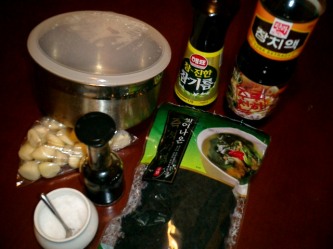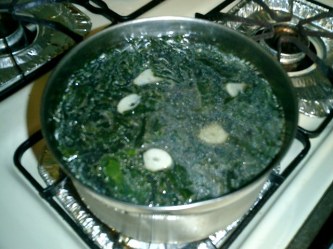Use Seaweed Extract in Your Garden
Liquid seaweed extract is something that many people would not think is something they would ever use in their garden but you should think again.
Seaweed has been use for agriculture and gardening for hundred of years and there is even a system used in Northern Ireland and Scotland called "lazy beds". These were long ridged beds which used to have seaweed dug into them as a fertilizer. The seaweed was washed to remove salt, presumably by letting the rain do the work, and then dug underneath the surface of the soil. They were used to grow potatoes in on often very poor and peaty soil.
People living near to the coast are still able to collect and used seaweed like this and if you are lucky enough to be able to do this please make sure that you only collect seaweed which is on the shore, not seaweed which is still attached to rocks. This is still growing and although harvested commercially this is done by experienced collectors. Seaweed is a favourite in compost bins.
For gardeners like me who cannot gather their own seaweed from the seashore, I can buy commercially produced organic seaweed extract which has a lot of benefits to the soil mix in my High Density Garden as seaweed and can do the same for your garden.
Seaweed is not really a fertilizer but it quickly decomposes and releases alginates in to your soil mix. This is a jelly like substance which helps to develop the humus content of your soil and also helps to bind the crumbs of soil together. It also acts in your soil as a plant tonic and a growth stimulant as well. Having said that, seaweed and seaweed extract does contain the major plant nutrients but in fairly small quantities. They also contain many trace elements as well.
Tests have been carried out which show that applying seaweed extract has helped to promote strong and healthy growth in vegetables as well as other garden plants. It also has the added benefit of helping to improve resistance to fungal and insect attacks. It has also been demonstrated that its use helps reduce symptoms of transplanting shock, as well as heat and frost damage. I use a liquid seaweed extract from one of the major suppliers which I dilute and water on to the surface of my soil mix. I also have an automatic feed system for the tomatoes and cucumbers in my greenhouse and I often add seaweed extract to the fertilizer tank so this is automatically applied to my crops.
Seaweed extract is a good addition to your garden soil and I am happy to use it so it is something you need to consider as well. I buy it in half gallon containers, (about 2 litres), but it can be bought in smaller sizes as well. There are also companies which sell seaweed extract in 220 gallon, 1000L containers. This is far too much to use in a normal backyard but it is aimed at farmers and places like golf courses. These commercial users would not be paying a lot of money for a product which does not do anything so I follow their lead and if it is good enough for them, then seaweed extract is good enough for my High Density Vegetable Garden.

























